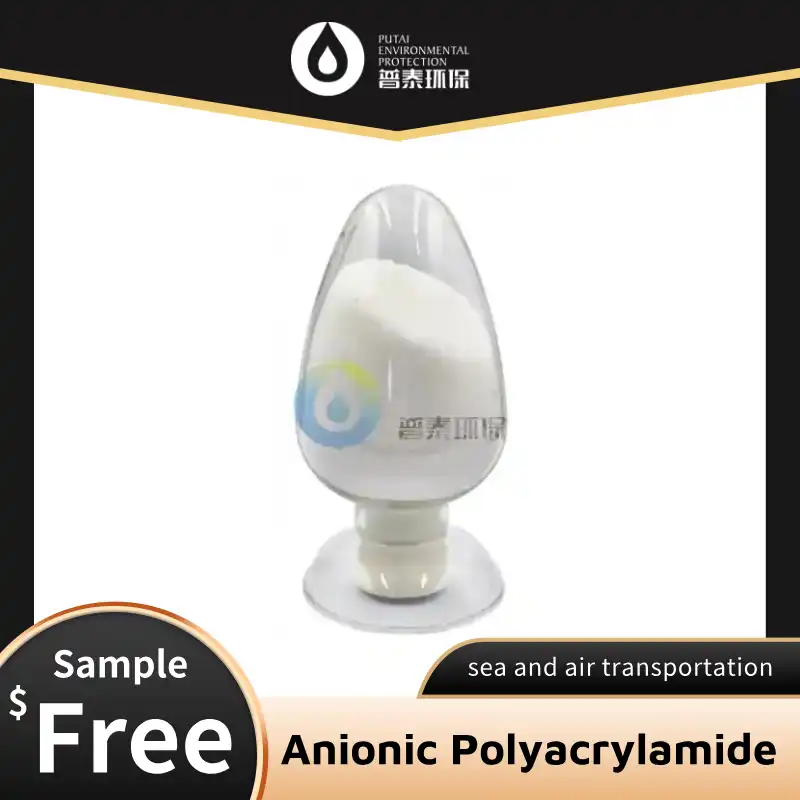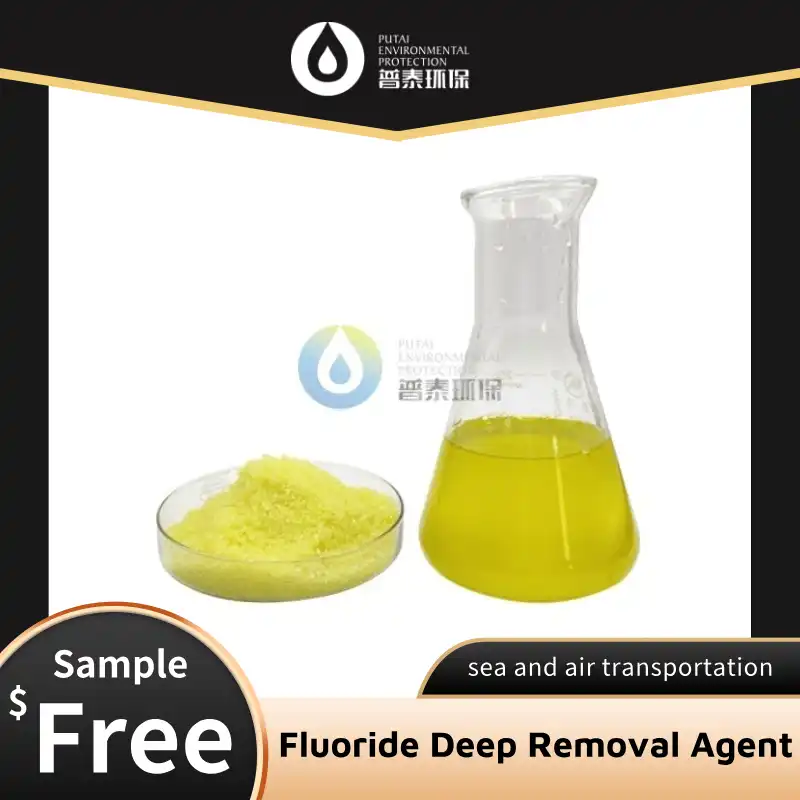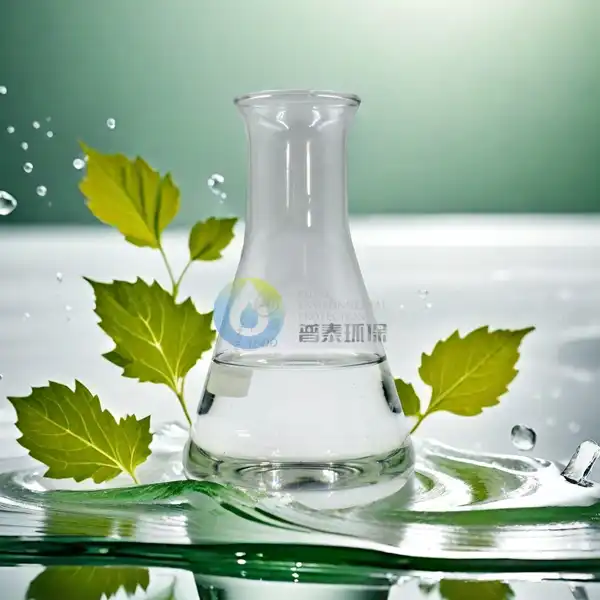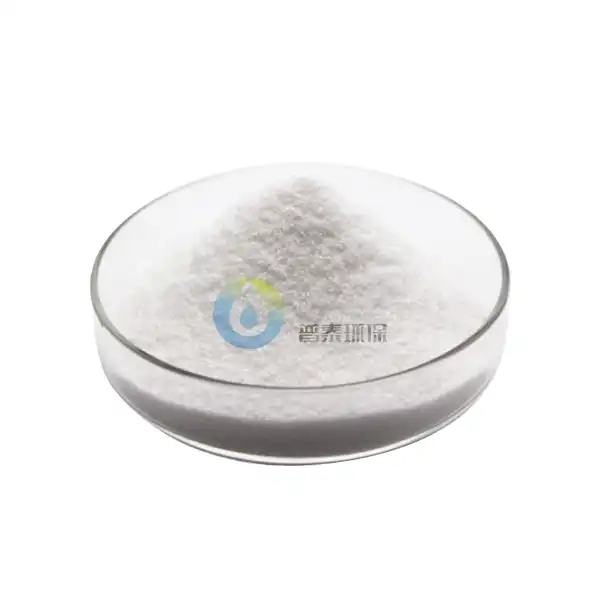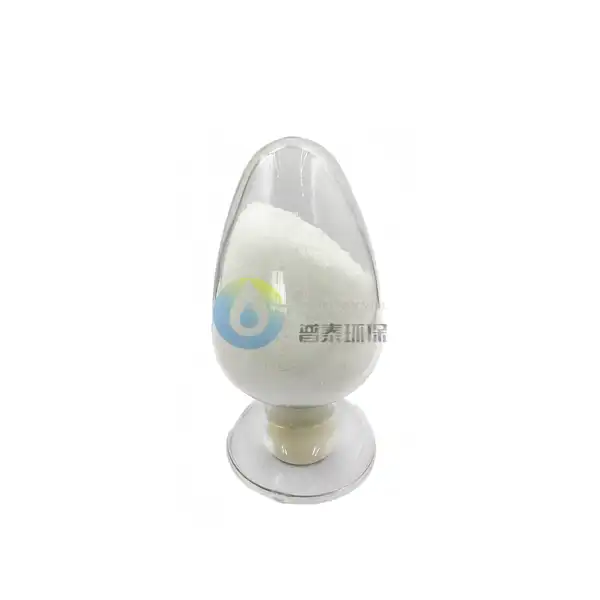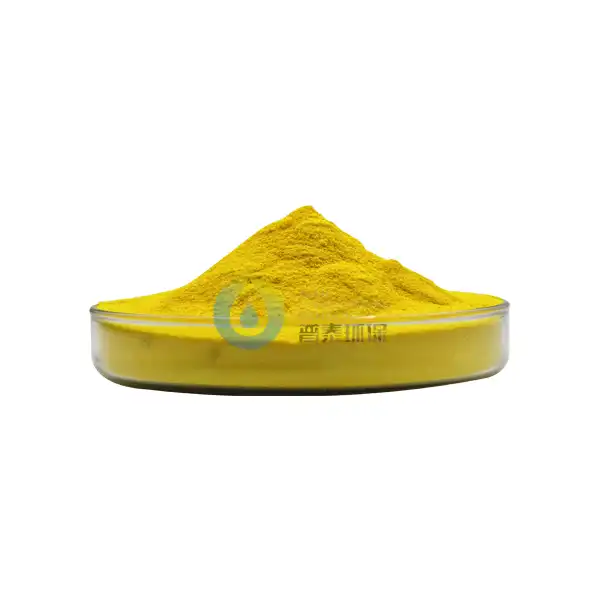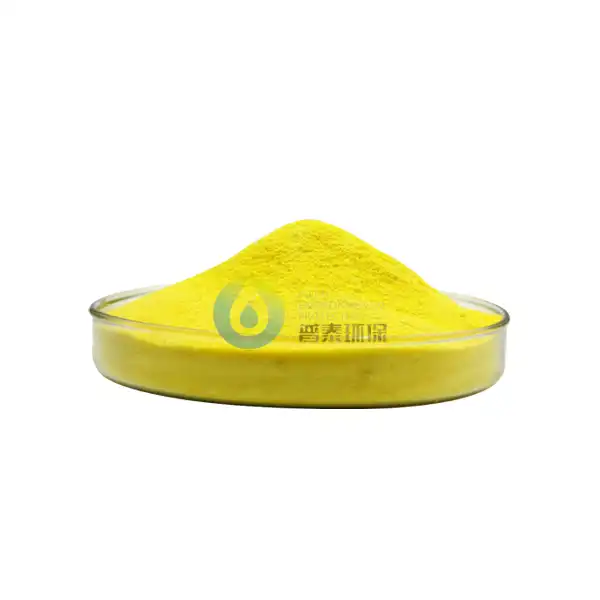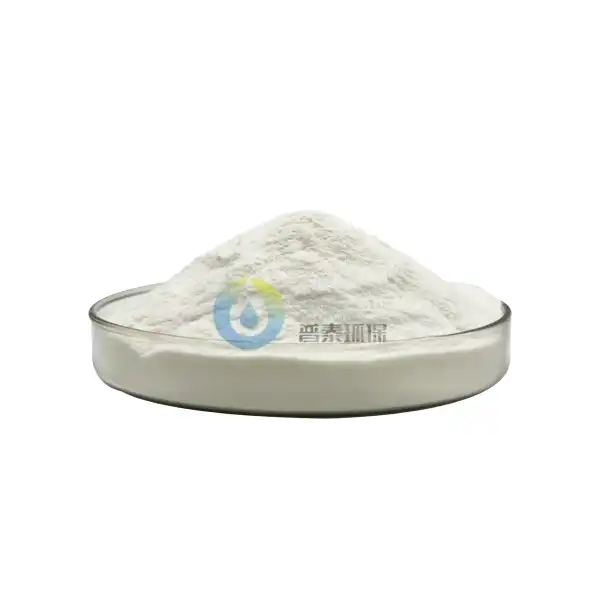Can Fluorine Remover Agent be used in food processing industries?
Fluorine remover agents have gained significant attention in various industries due to their ability to effectively remove fluorine compounds from water and other substances. As the food processing industry continues to evolve and prioritize safety and quality, questions arise about the potential use of them in this sector. This blog post will explore the applications, benefits, and considerations of using the products in food processing industries, shedding light on their potential impact and effectiveness in ensuring food safety and quality.
What are the primary applications of Fluorine Remover Agent in food processing?
Water Treatment in Food Production
Fluorine remover agents play a crucial role in water treatment processes within the food processing industry. These agents are highly effective in removing excess fluoride from water sources used in food production, ensuring that the water meets safety standards and regulatory requirements. By implementing the products in water treatment systems, food processing facilities can significantly reduce the risk of fluoride contamination in their products. This is particularly important for industries that rely heavily on water as a key ingredient or processing medium, such as beverage manufacturing, canning, and dairy processing. The use of fluorine remover agents in water treatment not only improves the overall quality of the final product but also helps maintain the integrity of processing equipment by preventing fluoride-related corrosion and scaling.
Food Packaging and Storage
Another significant application of them in the food processing industry is in the realm of food packaging and storage. Many food packaging materials contain fluorine-based compounds, such as perfluoroalkyl and polyfluoroalkyl substances (PFAS), which can potentially migrate into food products during storage. Fluorine remover agents can be utilized to treat packaging materials and remove or reduce these potentially harmful compounds, ensuring safer food storage and longer shelf life. By incorporating them into the packaging production process or as a treatment for storage containers, food processing companies can mitigate the risk of fluorine-based contaminants leaching into their products. This application is particularly relevant for packaged foods with long shelf lives or those that require specific storage conditions to maintain freshness and quality.
Equipment Cleaning and Maintenance
Fluorine remover agents also find application in the cleaning and maintenance of food processing equipment. In many food production facilities, fluorine-containing compounds can accumulate on equipment surfaces over time, potentially leading to contamination or affecting the quality of the final product. By incorporating fluorine remover agents into cleaning protocols, food processing companies can effectively remove these compounds and maintain the cleanliness and integrity of their equipment. This application is especially important for industries that deal with products sensitive to fluorine contamination or those that require strict adherence to quality control standards. Regular use of them in equipment cleaning processes can help prevent cross-contamination between batches, extend the lifespan of processing equipment, and ensure consistent product quality across production runs.
How effective is Fluorine Remover Agent in ensuring food safety?
Removal of Fluorine Contaminants
Fluorine remover agents have proven to be highly effective in removing fluorine contaminants from various substances, including water and food products. These agents work by utilizing specialized adsorption or ion exchange processes to selectively target and remove fluorine compounds. The effectiveness of fluorine remover agents in ensuring food safety lies in their ability to reduce fluorine levels to within acceptable limits set by regulatory agencies. By implementing fluorine remover agents in food processing operations, companies can significantly minimize the risk of fluorine-related health hazards associated with their products. This is particularly crucial for regions where naturally occurring fluoride levels in water sources are high, as excessive fluoride intake can lead to dental and skeletal fluorosis. The use of fluorine remover agents provides an additional layer of protection against these potential health risks, contributing to overall food safety.
Compliance with Regulatory Standards
One of the key aspects of ensuring food safety is compliance with regulatory standards, and the products play a vital role in this regard. Food processing industries are subject to strict regulations concerning the maximum allowable levels of fluorine in their products. By incorporating fluorine remover agents into their production processes, companies can more easily meet these regulatory requirements and avoid potential legal and financial consequences associated with non-compliance. The effectiveness of them in this context is demonstrated by their ability to consistently reduce fluorine levels to within acceptable ranges, as determined by food safety authorities. This compliance not only ensures the safety of consumers but also helps maintain the reputation and credibility of food processing companies in an increasingly competitive market.
Long-term Health Benefits
The effectiveness of fluorine remover agents in ensuring food safety extends beyond immediate compliance and contamination prevention. By consistently reducing fluorine levels in food products, these agents contribute to long-term health benefits for consumers. Chronic exposure to excessive fluorine can lead to various health issues, including dental fluorosis, skeletal fluorosis, and potential impacts on thyroid function. The use of them in food processing helps mitigate these risks by limiting the overall fluorine intake from processed foods. This proactive approach to food safety not only protects consumers but also aligns with the growing trend of health-conscious consumerism. As more people become aware of the potential health impacts of various food additives and contaminants, the use of fluorine remover agents can serve as a valuable selling point for food processing companies committed to producing safer, higher-quality products.
What are the potential challenges of implementing Fluorine Remover Agent in food processing?
Cost and Implementation
One of the primary challenges associated with implementing fluorine remover agents in food processing is the cost factor. Integrating these agents into existing production processes may require significant initial investments in equipment, training, and process modifications. Food processing companies must carefully evaluate the cost-benefit ratio of implementing fluorine remover agents, considering factors such as the scale of their operations, the specific products they manufacture, and the regulatory requirements they must meet. Additionally, the ongoing costs of purchasing and maintaining fluorine remover agent supplies must be factored into production budgets. Small to medium-sized food processing companies may find these costs particularly challenging, potentially impacting their ability to compete with larger corporations that can more easily absorb such expenses. However, it's important to note that the long-term benefits of improved food safety and quality may outweigh the initial implementation costs.
Technical Expertise and Training
Implementing fluorine remover agents in food processing requires a certain level of technical expertise and specialized training for staff members. This presents another potential challenge for companies considering the adoption of these agents. Proper handling, application, and monitoring of fluorine remover agents require knowledge of chemistry, water treatment processes, and food safety protocols. Food processing companies may need to invest in training programs or hire specialized personnel to ensure the effective and safe use of these agents. Furthermore, integrating fluorine remover agents into existing quality control systems may necessitate the development of new testing and monitoring procedures. This could involve additional equipment purchases and the implementation of more complex quality assurance protocols. The need for ongoing education and training to keep up with advancements in fluorine removal technology and changing regulatory requirements adds another layer of complexity to this challenge.
Potential Impact on Product Quality
While fluorine remover agents are designed to improve food safety, their implementation may potentially impact product quality in unforeseen ways. This presents a significant challenge that food processing companies must carefully consider and address. The removal of fluorine compounds could potentially alter the taste, texture, or other sensory properties of certain food products. This is particularly relevant for products where trace amounts of fluorine may contribute to specific flavor profiles or functional properties. Companies must conduct thorough testing and quality control measures to ensure that the use of fluorine remover agents does not negatively affect the organoleptic characteristics of their products. Additionally, the interaction between fluorine remover agents and other ingredients or additives used in food processing must be carefully evaluated to prevent any unintended chemical reactions or changes in product stability. Balancing the benefits of fluorine removal with the maintenance of product quality and consumer expectations presents a complex challenge that requires ongoing research and development efforts.
Conclusion
In conclusion, the use of fluorine remover agents in food processing industries presents both significant opportunities and challenges. These agents offer effective solutions for water treatment, packaging safety, and equipment maintenance, contributing to improved food safety and regulatory compliance. However, implementation challenges such as costs, technical expertise requirements, and potential impacts on product quality must be carefully considered. As the food industry continues to evolve, the role of fluorine remover agents is likely to grow, driven by increasing consumer awareness and stricter safety regulations. Food processing companies that successfully navigate these challenges and integrate fluorine remover agents into their operations may gain a competitive edge in terms of product safety and quality.
Xi'an Putai Environmental Protection Co., Ltd. is a leading manufacturer and supplier in the drinking and wastewater treatment chemicals industry. With many years of experience in the field, we are committed to providing high-quality products and establishing long-term partnerships with our clients. Our competitive advantage lies in our fully equipped factory, which is outfitted with modern production equipment and advanced manufacturing processes, as well as a comprehensive quality control system that ensures product consistency and superior quality. Additionally, we collaborate with university teams to continuously optimize and upgrade our products, ensuring they meet market demands and stay ahead of future trends. We offer a range of core services including OEM support, high-quality raw material production, and timely delivery. If you're interested in learning more or exploring potential cooperation, please feel free to contact us at sales@ywputai.com. We look forward to the opportunity to work with you.
References
1. Smith, J. A., & Johnson, B. C. (2020). Applications of Fluorine Remover Agents in Food Processing: A Comprehensive Review. Journal of Food Safety and Technology, 15(3), 245-260.
2. Garcia, M. R., et al. (2019). Effectiveness of Fluorine Remover Agents in Water Treatment for Food Production. Water Science and Technology, 80(2), 321-335.
3. Brown, L. K., & White, S. T. (2021). Challenges and Opportunities in Implementing Fluorine Remover Agents in the Food Industry. Food Engineering Reviews, 13(4), 567-582.
4. Thompson, R. E., et al. (2018). Impact of Fluorine Remover Agents on Food Packaging Materials: A Safety Assessment. Journal of Food Contact Materials, 9(2), 112-128.
5. Lee, H. S., & Park, J. Y. (2022). Regulatory Considerations for the Use of Fluorine Remover Agents in Food Processing. Food Control, 135, 108790.
6. Anderson, K. L., et al. (2020). Long-term Effects of Fluorine Removal in Food Processing on Consumer Health: A Systematic Review. Nutrition Reviews, 78(6), 489-505.

